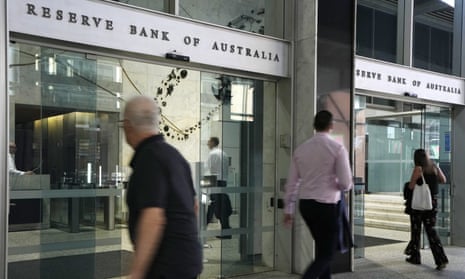Bets are rising that Australia’s record run of rate rises is about to end, as fears triggered by the collapse of Silicon Valley Bank sweep global markets and sink bank stocks.
The rapid shift in sentiment is good news for indebted homeowners grappling with rising mortgage repayments, although high inflation continues to pressure households.
The collapse of the California-headquartered SVB has prompted some traders to even start pricing in a chance of a cash rate cut in Australia later this year, a position that had little support just a week ago.
Peter Swan, a professor at the University of New South Wales business school, said the Reserve Bank of Australia was in a difficult position because if it paused its rate hike cycle as expected, it may have to combat higher inflation at a later date.
“The RBA is between a rock and a hard place,” said Swan, who also advocates for a pullback in spending by the federal and state governments.
“We are expecting a lot more disharmony and failures of banks around the world.”
Sign up for Guardian Australia’s free morning and afternoon email newsletters for your daily news roundup
The California-headquartered SVB collapsed on Friday after customers rushed to withdraw their money over concerns for the bank’s financial stability.
The preferred bank for the technology sector invested heavily in US government bonds which lost value after the Federal Reserve started to aggressively increase rates to combat inflation, making it the biggest corporate casualty of the rate hikes.
While the US government moved quickly to contain the fallout by guaranteeing deposits, investors have shunned the wider banking sector amid concerns SVB’s problems could be indicative of a broader weakness in bank balance sheets.
Shares in regional US banks were hit hard even after the US president, Joe Biden, sought to restore calm by insisting the banking system was safe.
Australian banks were sold down heavily in early trading on Tuesday, before recovering late in the day.
The Australian treasurer, Jim Chalmers, said on Tuesday that the government was working with regulators and other groups to understand any implications for Australia flowing from SVB.
after newsletter promotion
“Australians should be reassured that we have a resilient, well-capitalised banking system that has strong liquidity coverage,” Chalmers said.
Last week, the Reserve Bank increased the official cash rate by 0.25 percentage points to 3.6%, marking a record run of 10 consecutive rises.
Financial indicators tracked by the RBA show that the market has all but given up on expectations of an 11th consecutive rate rise in April.
Australia’s annual inflation rate, which eased to 7.4% in January, last ran hot in Australia in the 1980s before the start of the recession in late 1990 led to a quick drop.
Two surveys released on Tuesday found that Australian business confidence was souring and household sentiment was pessimistic, representing twin signs that spending should fall.
The AMP chief economist, Shane Oliver, said that economic risks would give central banks around the world reason to refrain from more imminent hikes.
“Given the now high risk of recession, which would curtail inflation, it makes sense for central banks including the RBA to pause rate hikes,” Oliver said on Tuesday.
